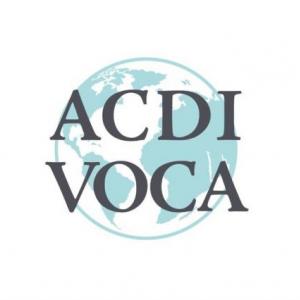Inclusive Value Chain Development: Reflections from ACDI/VOCA and SDC Asia
This blog post was contributed by ACDI/VOCA and SDCAsia following Breakfast Seminar #70 on June 28, 2012.
This Breakfast Seminar, “Inclusive Value Chain Development: Reaching the Very Poor in the Philippine Mariculture Industry,” focused on experience in leveraging the value chain approach to facilitate increased mariculture competitiveness while also stimulating opportunities for the very poor to participate in, benefit from, and contribute to that growth.
Anna Cuny Garloch of ACDI/VOCA opened the discussion, outlining tensions that often exist in reaching the very poor while also striving to facilitate truly systemic, transformative economic growth. She highlighted recent learning from ACDI/VOCA’s AMAP BDS K&P II project, funded by USAID, which explored the topic of inclusive value chain development through a number of initiatives and learning products, including a series of case studies (of which SDCAsia’s project is one). Although often overlooked during our traditional market analyses, the very poor are nearly always part of market systems (either directly, such as labourers, or through their role in interconnected systems, such as transport). Yet compared to those who are ‘less poor,’ the very poor tend to face unique constraints to accessing market opportunities, and therefore a deliberate program strategy is necessary to maximize the inclusiveness of our value chain development efforts. Lastly, Cuny Garloch outlined two strategic approaches: a poverty-sensitive value chain approach and the more intensive pathways out of poverty approach.
Marian Boquiren, who joined the seminar remotely from Manila, then shared experiences from SDCAsia’s 3-year project in the Philippines, which received funding of Euro 300,000 from ICCO/Kerk en Actie Netherlands. The target groups consisted of households in six coastal villages in southern Philippines, the majority of whom were artisanal fisherfolk or doing odd jobs on an intermittent basis. The root causes of vulnerability included seasonal variation in livelihood returns; dependence on natural resources for subsistence and the overuse of these resources; lack of information to make better livelihood decisions; and social and economic power imbalances and marginalization. The mariculture industry itself faced key constraints including unstable supply of good quality fingerlings; low productivity; poor post-harvest facilities; trust issues; and a lack of value addition.
The intervention approach, which took account both industry competitiveness and livelihood generation issues, was built around the theme “transforming constraints in the mariculture industry into livelihood opportunities for coastal households.” To facilitate pathways out of poverty, it was not enough to provide them with skills to improve income generation and asset building capacities, but also to ensure that the environment and market system in which these livelihoods are situated are growing and vibrant. The project focused on the promotion of livelihoods vital to the competitiveness of the industry. At the same time, the project worked to strengthen the ability of the chains to penetrate differentiated markets and thus enable the industry to provide more opportunities for the gainful participation of the poor.
SDCAsia tracked the typical trajectories of both men and women fisherfolk as they developed, and Boquiren shared some interesting differences and similarities in the livelihood pathways women and men typically followed.
The project’s experience also shows that there is a need to increasingly integrate behavior change interventions in value chain development projects, and to be sensitive about the role deep poverty can sometimes play in reinforcing behaviors that will negatively impact an individual’s ability to transition upwards out of poverty.


